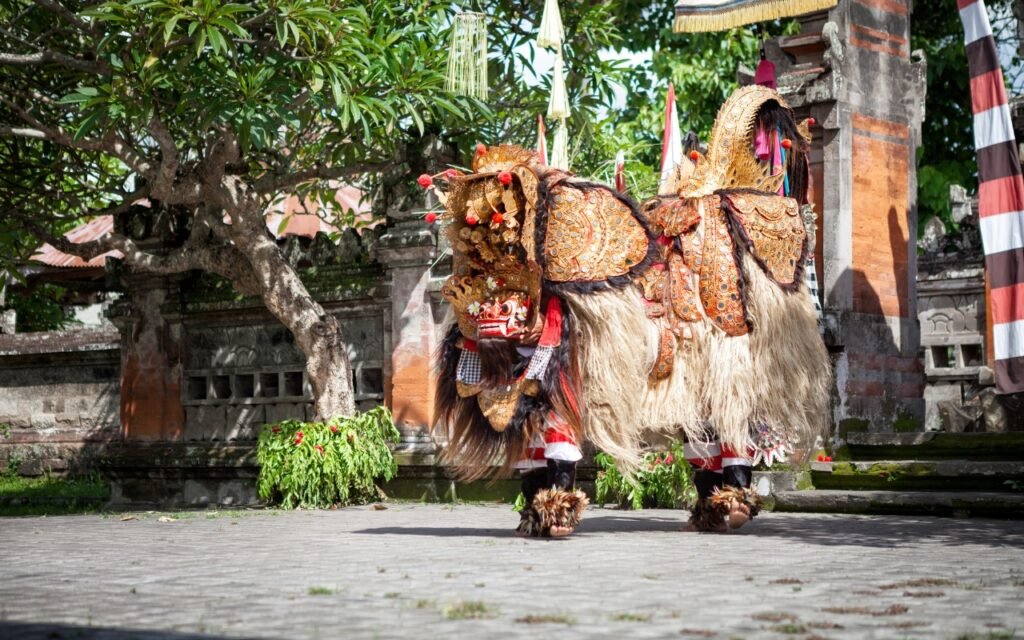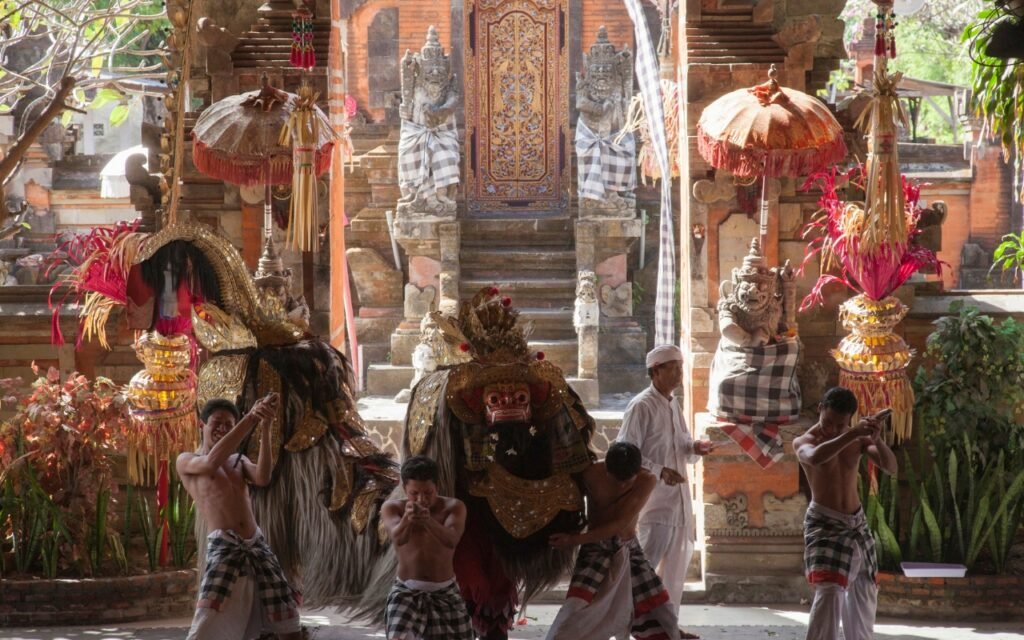Barong And Keris Dance
The Barong and Keris Dance is one of Bali’s most iconic and captivating traditional performances, deeply rooted in Balinese mythology and spirituality. It vividly portrays the eternal battle between good and evil, represented by the Barong and Rangda respectively. This dramatic spectacle is a must-see for anyone wanting to immerse themselves in Balinese culture and artistry.
Here’s a breakdown of the key elements:
The Story:
The dance typically tells a story derived from ancient Balinese folklore, often involving the epic tale of the Barong, a benevolent spirit in the form of a mythical creature, and Rangda, the terrifying demon queen and embodiment of evil. The narrative usually unfolds as follows:
- The Appearance of Barong: The Barong, often depicted as a shaggy, lion-like creature with a vibrant costume adorned with mirrors and intricate carvings, makes his grand entrance. He is usually portrayed by two men, one operating the front and the other the rear. The Barong is a playful and protective figure, symbolizing goodness, virtue, and the cosmic balance. Different types of Barong exist, such as the Barong Ket (lion-like), Barong Bangkal (wild boar), Barong Macan (tiger), and Barong Landung (giant figures).
- The Emergence of Rangda: In stark contrast, Rangda appears as a fearsome figure with long, sharp fingernails, wild hair, a protruding tongue, and a mask with bulging eyes and sharp fangs. She embodies darkness, destruction, and the power of black magic. Her movements are often dramatic and menacing, evoking a sense of fear and unease.
- The Battle: The central part of the performance depicts the ongoing struggle between the Barong and Rangda and their respective followers. There are often scenes involving Rangda’s attempts to spread plague and misfortune, and the Barong’s efforts to thwart her evil intentions.
- The Trance Dance (Keris Dance): A particularly dramatic and unique segment involves the male followers of the Barong, known as pengiring. In a trance-like state, induced by the intense music and spiritual energy of the performance, these men turn their kris (traditional wavy-bladed daggers) against their own chests. It is believed that the Barong’s protective magic renders them unharmed by their self-inflicted stabs, showcasing the triumph of good over evil and the power of spiritual protection. This scene is often the climax of the performance.
- The Inconclusive Ending: Typically, the Barong and Keris Dance doesn’t conclude with a definitive victory of good over evil. Instead, it emphasizes the continuous and cyclical nature of this battle in the universe. The forces of good and evil are seen as eternally present and in balance, a fundamental concept in Balinese philosophy.
The Performance Elements:
- Costumes: The elaborate and vibrant costumes are integral to the performance. The Barong’s shimmering body and expressive mask, along with Rangda’s terrifying visage and flowing hair, are visually stunning.
- Music (Gamelan): The performance is accompanied by the dynamic and often intense sounds of the Balinese Gamelan orchestra. The rhythmic and percussive music heightens the drama, builds suspense, and induces the trance-like state of the pengiring.
- Acting and Dance: The performers use expressive movements, gestures, and dramatic acting to convey the story and the emotions of the characters. The Barong’s playful prancing and Rangda’s menacing glares are captivating.
- Spiritual Significance: Beyond entertainment, the Barong and Keris Dance holds deep spiritual meaning for the Balinese. It is often performed during temple festivals and other important ceremonies to ward off evil spirits and restore balance to the community.
Where to See It:
The Barong and Keris Dance is a popular tourist attraction and is performed regularly in various locations around Bali, particularly in the Ubud area (such as Batubulan village, known for its Barong performances). Performances usually last about an hour.
Experiencing the Barong and Keris Dance offers a fascinating insight into Balinese mythology, artistry, and spiritual beliefs. The vibrant costumes, dramatic storytelling, captivating music, and the unique trance dance make it an unforgettable cultural experience.










